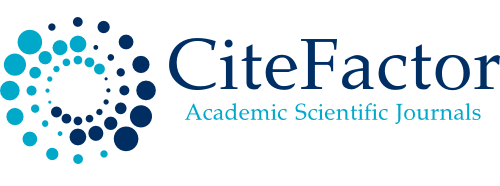The study of knowledge management status in the tax affairs organization (Case Study of Kashan Tax Administration)
DOI:
https://doi.org/10.61841/99ddrt84Keywords:
knowledge management, technology, culture, process, policiesAbstract
Introduction: Knowledge management involves understanding and managing the areas, in which, knowledge is acquired, generated, transferred, and used. All of these measures are aimed at helping the organization achieve its goals. Knowledge management has four fundamental components, namely as technology, culture, process of action, and policies. This research was performed to study the status of knowledge management in the tax affairs organization.
Research methodology: The research methodology was a descriptive-surveying one of the applied type. The statistical population included the staff of the tax affairs organization and the statistical sample was selected non-randomly. The employees of the tax affairs organization of Kashan accounted for 76 people. The data was collected through a questionnaire, which validity was confirmed by a number of experts and its reliability was calculated using the Cronbach's alpha coefficient as 0.905. The data were analyzed by Excel and SPSS22 software in addition to descriptive statistics.
Results: According to the results, the knowledge management status in Kashan Tax Affairs Organization was below the average. The utility status of the basic components of knowledge management based on the average central index were respectively as follows: Technology (3.13), process of operation (2.91), culture (2.85), and policies (2.66). Accordingly, only the status of technology component was evaluated above the average. In addition, the relationship between all four above components with knowledge management was evaluated positive based on Pearson correlation coefficient.
Conclusion: According to the research results, there is a significant and positive relationship between the components of technology, culture, process of operation, and policies with the status of knowledge management. Moreover, the status of these components and knowledge management in the tax affairs organization is below the average and not desirable.
Downloads
References
1. Ahmadyousefi, R., Choobchian, Sh., Chizari, M. (2017). Investigating the status of knowledge management components in developing drought crisis management programs from the perspective of agricultural operators in Kerman, epistemological studies, 3rd year, 2017, 11: 21-40.
2. Iranzadeh, S., Fakhimiazar, S., Jedarisefidgari, A. (2015). The effect of knowledge management components on workforce productivity using factor analysis in financial and credit institutions in Tabriz, productivity management, 9th year, 2015, 33: 27-45.
3. Barzinpour, F., Sadeghisaboor, A., Zafari, M. (2008). Designing a conceptual model for knowledge layers. The fourth international conference on project management, Tehran.
4. Prost, G., Rob, S., Romhardet, K. (2006). Knowledge management. Translated by Hoseininkhah, A. Tehran, Yastaroon Publications.
5. Hasanbeigi, M. (2010). Presenting a model of key factors of knowledge management success to promote creativity and organizational learning in country’s airport company. Master’s Thesis, Tehran, Payame Noor University.
6. Haghi, M., Rasti arzaki, M., Mahdavi, H. (2014). Classification of factors affecting knowledge management success in knowledge-based companies: a case study of knowledge-based companies in Isfahan scientific and research town, journal of technology development, 11th year, 2014, 41: 52-58.
7. Rading, A. (2010). Knowledge management, success in global economy based on information (translated by Latifi, M.H), Tehran, SAMT.
8. Abbasi, Z. (2009). Identification of the organizational culture governing the central university libraries and its effect on knowledge management implementation. Ph.D. Thesis in Library and Information Science, Ferdowsi University.
9. Abbasi, M., Maki, M. (2009). The necessity of innovation in implementing management and information technology management programs in Iran, Specialized Journal of Parks and Growth Centers, 24.
10. Atapour, H. (2009). Investigation and analysis of factors affecting knowledge management cycle in university libraries: case study of central libraries in Tehran. Proceedings of the national conference on knowledge and scientific management. Information: links and interactions. Tehran: Ketabdar Publications, 2009.
11. Ghaffari, S., Zanjirdar, M., Haghdadi, M. (2009). Strategic study of knowledge management in university libraries in Arak, 26, 22-28.
12. Ghelichlee, B. (2014). Knowledge management, the process of creating, sharing, and using intellectual property in businesses. Tehran: Organization of Study and Compilation of Humanities and Academic Books, SAMT.
13. Karel, C. (2013). Knowledge management from the perspective of a commercial strategy. Translated by Ahmadi, S., Journal of Information Science, 8.
14. Lawden, K., Lawden, J. (2011). Management information systems (translated by Molanapour, R., Habiipour, F., Karami, M.). Tehran, Atinegar Publications.
15. Nazari, M., Hadoori, F., Tondnevis, F., Bagheri, H. (2011). Investigating the status of knowledge management and its relationship with organizational culture in general departments of physical education in Ilam and Kemanshah provinces. Sport Management Studies, 2011, 12: 75-86.
16. Noori, S., Jafari, M., Haghighatmanesh, S. (2009). Knowledge management cycle (case study), Journal of Military Management, 2009, 33: 175-198.
17. Bolloju, Narasimha, Mohamed Khalifa, and Efraim Turban. (2002). Integrating knowledge management into enterprise environments for the next generation decision support . Decision Support Systems 33 (2002). pp 163– 176.
18. Davenport,T.H(2011),some principles of knowledge Management, www.Bus.Utexas .Edu/Kman/Kmprin.Htm.
19. Hsia, Tzyh-Lih; Lin, Li-Min; Wu, Jen-Her;Tsai, Hsien-Tang. (2006). A Framework for Designing Nursing Knowledge Management Systems. 1.
20. Moore, David and McCutcheon Hogan. 2009. GIS in a Knowledge Domain: Bringing GIS to operational integration in Spatial Planning.
21. Nardi,B,Whittaker,s,Schwarz,H(2012), lts Not what you know,lts not what You know:work in the Information Age,First Monday, May.http://www.firstMonday.org
22. Palanisamy, Ramaraj. 2008. Organizational Culture And Knowledge Management In ERP Implemention: An Empirical Study, Journal of Computer Information Systems.
23. Roknuzzaman, Md; Umemoto, Katsohiro (2009). How Library Practitioners View Knowledge Management in Libraries: A Qualitative Study. Library Management, 30(8/9), pp. 643- 656.
24. Soliman, F. and Spooner, K., "Strategies for implementing knowledge management: role of human resources management", Journal of Knowledge Management, 2000.
25. Seryasat, O. R., & Haddadnia, J. (2018). Evaluation of a new ensemble learning framework for mass classification in mammograms. Clinical breast cancer, 18(3), e407-e420.
Downloads
Published
Issue
Section
License

This work is licensed under a Creative Commons Attribution 4.0 International License.
You are free to:
- Share — copy and redistribute the material in any medium or format for any purpose, even commercially.
- Adapt — remix, transform, and build upon the material for any purpose, even commercially.
- The licensor cannot revoke these freedoms as long as you follow the license terms.
Under the following terms:
- Attribution — You must give appropriate credit , provide a link to the license, and indicate if changes were made . You may do so in any reasonable manner, but not in any way that suggests the licensor endorses you or your use.
- No additional restrictions — You may not apply legal terms or technological measures that legally restrict others from doing anything the license permits.
Notices:
You do not have to comply with the license for elements of the material in the public domain or where your use is permitted by an applicable exception or limitation .
No warranties are given. The license may not give you all of the permissions necessary for your intended use. For example, other rights such as publicity, privacy, or moral rights may limit how you use the material.









